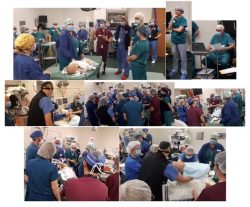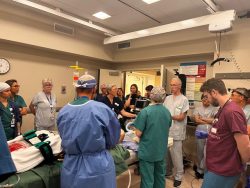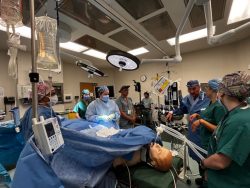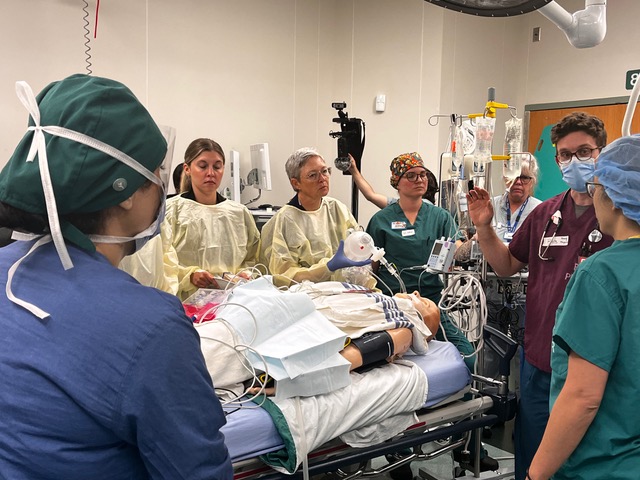For the past five years, with the support of NMSES, we have been growing our simulation program at NRGH. It had its origins in sessions designed exclusively for anesthesia staff that then expanded to include nurses and surgeons in the operating room. It was awarded Section 3 Royal College accreditation hours in 2018 by UBC which provides valuable credits for participating physicians. It has since grown to encompass many different groups throughout the hospital including PACU, Emerg, ICU, pediatrics and radiology in addition to the OR staff. We welcome nurses, RTs, docs of all stripes, AAs, social workers and anyone else who expresses an interest!
We have a fabulous group of dedicated volunteers (physicians, nurses and AAs) to make our evenings come alive with simulated medical disasters. Our scenarios range from rare but catastrophic disasters to reenactments of actual events that warrant revisiting. We use needs assessments to find out what the staff want to focus on to improve patient care. We make use of our sim lab’s mannequins which include an adult, child and infant.
Our most recent adventure started in the emergency trauma bay where an unfortunate young man who crashed on a motorcycle presented with life-threatening injuries. He was stabilized in emergency where the team secured the airway and placed a chest tube before being rushed to the OR for damage control surgery. A “Major Hemorrhage Protocol” was initiated. In the OR the surgeons got control of the bleeding and addressed some of the orthopedic injuries, while the anesthetist placed lines and coordinated the MHP with the help of the nursing staff. Once the patient was stabilized, he was moved to the radiology suite for definitive imaging. After a series of unfortunate events including a mishap with the endotracheal tube, the patient was prepared for his transfer out to a neurosurgical centre.
Simulation is a great way to practice and optimize our emergency systems, and to observe other areas’ practices. It is a way to openly share mutual concerns over shortcomings (generally resource-related) and to learn how best to assist other areas when personnel are at a premium (as is always the case in the middle of the night!) It allows us to brainstorm together solutions to the highlighted deficiencies. It also allows us to utilize our Crisis Resource Management skills, which improve every time we practice. Best of all, we get to meet new friends from different areas of the hospital!
We are so fortunate to work with such highly competent and dedicated people. Another illustration of NRGH knocking it out of the park!



Dr. Sarah Hall
MD, FRCPC – Anesthesiology
BCAS Simulation Chair


